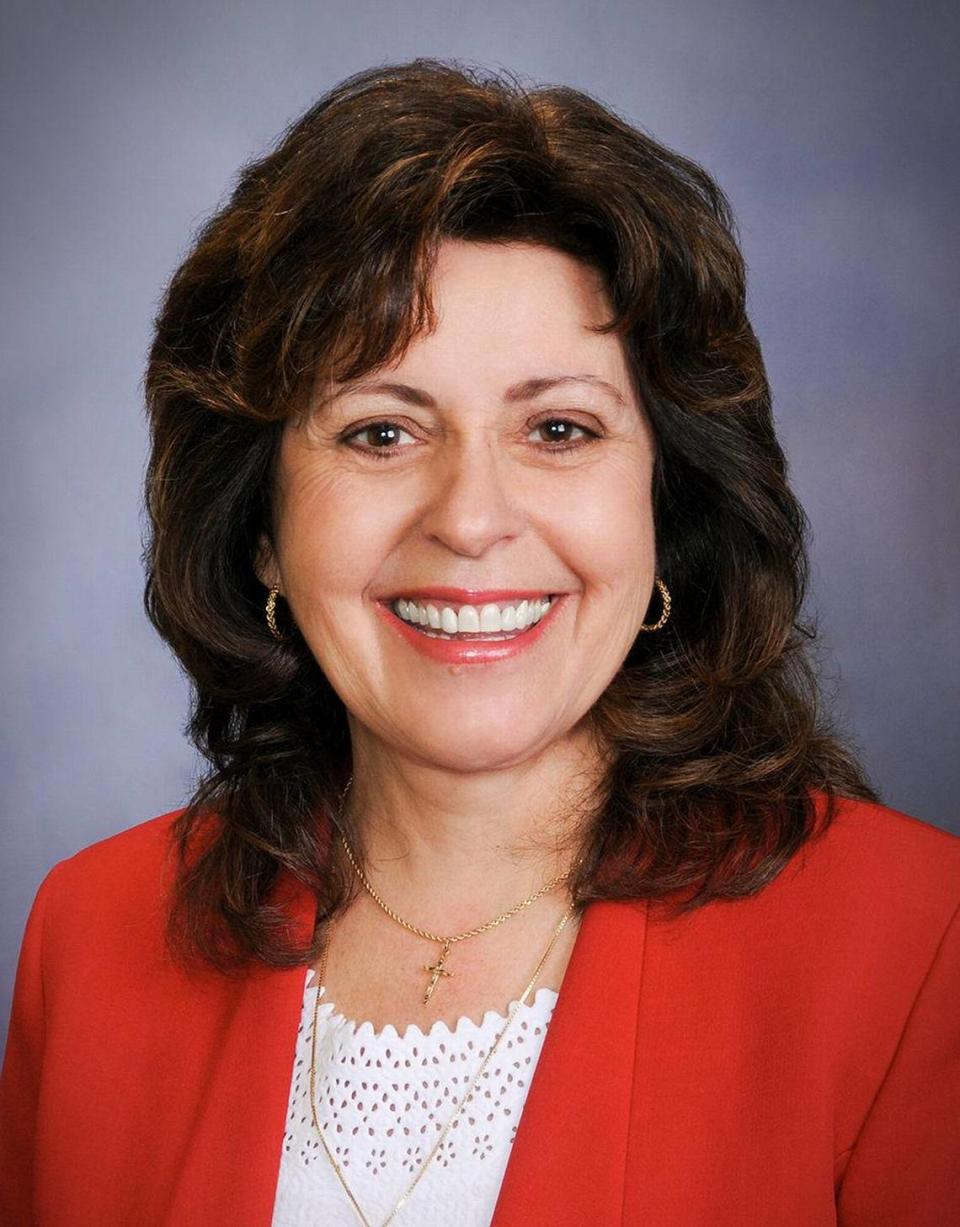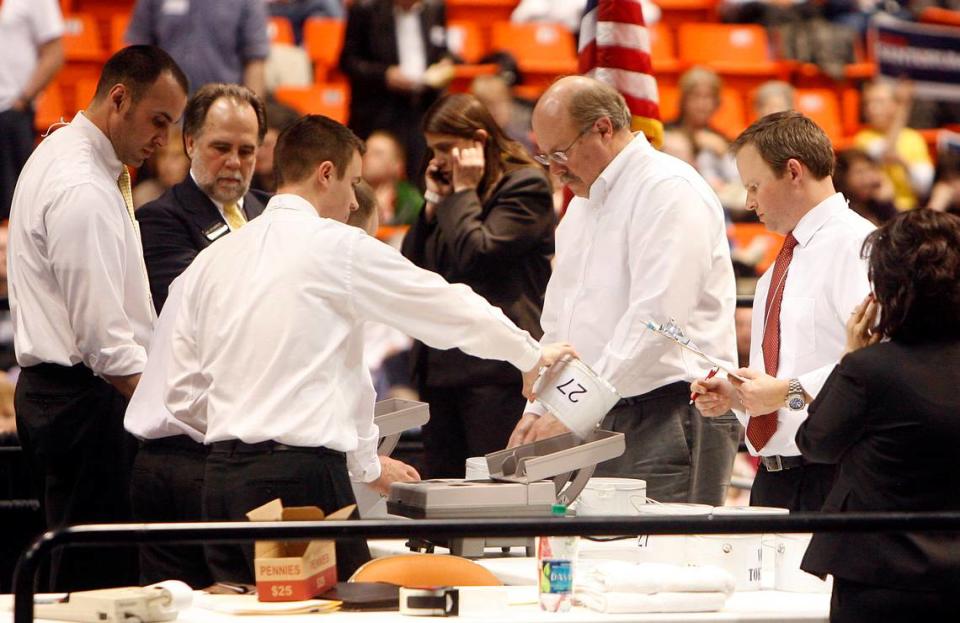Idaho Republican presidential caucus is Saturday. Here’s how it works, what to know
- Oops!Something went wrong.Please try again later.
The Idaho Republican Party decided to take a different course of action to determine this year’s Republican nominee for the 2024 presidential election.
Instead of the traditional primary election that many Americans are accustomed to, the party will hold a caucus on Saturday for the first time since the 2012 election cycle.
But what is a caucus, how does it work, and why is the Idaho Republican party switching things up in 2024? Here’s what to know, even though there may not be much mystery in who will win.
What is a caucus?
Primaries and caucuses have the same end goal of choosing a presidential nominee, but how they function is vastly different.
A typical primary will see voters show up at their polling location, confirm their voter registration with a poll worker, and then privately fill in a ballot before going on their way. If the polling station is quiet, a voter can be in and out within five minutes; in the worst-case scenario, you may have to wait in line for a while.
The candidate with the most votes is awarded the delegates for that state.
Each state awards a different number of delegates based on a formula set by the party, including factors such as the population and how well that state’s nominee has done in past presidential elections.
Idaho will award 32 delegates this year, and a nominee will need an estimated 1,215 delegates to secure the Republican nomination.
Caucuses work differently than your regular primary.
They can be envisioned as “private meetings” because, typically, they’re run by the state political party and are accessible only to registered voters of that party. (Idaho has a closed Republican primary as well, though.) During a caucus, voters can discuss their choice with other people, and their vote isn’t done privately in a booth but instead in the open alongside other voters.
Dorothy Moon, chair of the Idaho Republican Party, said in a public meeting in February that each candidate is expected to send in a video for voters to watch at the caucus. Because of the community aspect, participating in a caucus can sometimes take up several hours of a person’s day.

How will the caucus this weekend in Idaho work?
Saturday’s caucus actually will take place at 210 different locations across the state, starting at 12 p.m. Mountain time.
Moon estimates that the caucus will last about 90 minutes at smaller locations and two hours at larger sites. Results will then be available about three hours after voting finishes, she said.
This places Idaho’s presidential caucus a couple of days ahead of “Super Tuesday” on May 5, which is the day when several states plus American Samoa run their primaries and caucuses, going a long way to determining the party’s presidential nominee.
There is not much mystery in that department — Donald Trump is already the presumptive Republican nominee, his vast legal problems notwithstanding.
Idahoans will have a chance to vote for the following six candidates:
Former President Trump
Former South Carolina Gov. Nikki Haley
Texas-based businessman and pastor Ryan Binkley
Florida Gov. Ron DeSantis
Businessman Vivek Ramaswamy
Former New Jersey Gov. Chris Christie
Notably, only the first two candidates on the list are still in the race — Binkley, DeSantis, Ramaswamy and Christie all having dropped out.
The first step for Idahoans is to find their caucus location. Moon said that registered Republicans should have received a postcard in the mail with their polling location, but if it didn’t arrive, you can check your caucus site on the Idaho GOP website.
To gain caucus admission, you must be a registered Republican in Idaho as of Dec. 31.
Upon arriving at your caucus location, you’ll be asked to provide a valid government ID to ensure you’re eligible to vote at that caucus site. The ID can be an Idaho driver’s license, U.S. passport, federal ID card, tribal ID or a concealed carry permit, Moon said.
Once inside, you’ll be given a stamp and your ballot, and be directed to the area where you can talk with other voters and cast your vote. There will also be televisions running videos from candidates who submitted one.
“If you’re not sure who you want to go for, watch the presentations,” Moon said. “They have five minutes each.”

Once you vote, you’ll receive another stamp and are free to leave. Voters are also allowed to stick around and witness the count, Moon said. Once the count is complete, officials from each caucus site will call in the results to the Idaho Republican Party headquarters, where the votes will be tabulated.
If a candidate wins over 50% of the votes, they will be awarded all of Idaho’s 32 delegates. If no candidate gets over 50%, they will be awarded delegates proportional to the votes they received between each candidate who received at least 15% of the vote.
Why are Idaho Republicans running a caucus?
Moon said that opting for a caucus over a primary will save the state millions of dollars.
“You have to remember that the argument on removing the large primary was to save $2.7 million,” Moon said. “It’s going to cost us a couple-hundred-thousand dollar to pull off a presidential caucus.”
A mistake in passing a bill in 2023 paved the way for the caucus.
Lawmakers passed a bill introduced by Idaho Secretary of State Phil McGrane that inadvertently eliminated Idaho’s presidential primary election while attempting to move the primary from March to May.
That meant the legal mechanisms were no longer in place to mandate a state-run primary, and last year lawmakers failed to come to an agreement to have a special session to reinstate the primary. The Democrats will have their caucus in May.

